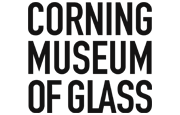About the Artist
Sculpture & Glass
Amber Cowan's sculptural glasswork is based around the use of recycled, upcycled, and second-life American pressed glass. She uses the process of flameworking, hot-sculpting and glassblowing to create large-scale sculptures that overwhelm the viewer with ornate abstraction and viral accrual. With an instinctive nature towards horror vacui, her pieces reference memory, domesticity and the loss of an industry through the re-use of common items from the aesthetic dustbin of American design. The primary material used for her work is glass cullet sourced from scrap yards supplied by now defunct pressed glass factories as well as flea-markets, antique-stores and donations of broken antiques from households across the country.
Her recent diorama-style pieces tell stories of self-discovery, escapism and the power of the feminine by utilizing figurines and animals found in collected antique glass pieces. These figurines become recurring symbols in the evolving narrative and simultaneously pay homage to the history of US glassmaking.
Cowan lives and works in Philadelphia where she received an MFA in Ceramics/Glass from Tyler School of Art and Architecture of Temple University. She was the recipient of the 2014 Rakow Commission from The Corning Museum of Glass and her work can be found in the permanent collection of The Museum of Art and Design in New York, The Toledo Museum of Art, and The RISD Museum.
About the Artist
Statement / Process
My work is based on the rejuvenation and reuse of American pressed glass. The majority of the material I use is “cullet” or the scrap glass left after the production run in a glass factory. I travel and search for cullet yards throughout the country where there are barrels and piles of old dead stock colors which I then remelt scrap by scrap through the process of flameworking into the multitude of forms that create each of my sculptures. The glass that I use is generally procured from now defunct pressed glass manufacturers.
During the mid-1800’s through the mid 1900’s pressed glass manufacturing was an enormous industry that employed thousands of Americans throughout the country. Because of the popularity of designs and the ease of production by the mid-19th century most inexpensive glassware was pressed.
Nowadays, this material is out of fashion and relegated to the dustbin of American design. I take this material which is abundant on the shelves of thrift stores and flea markets and rejuvenate it into a new second-life.
When I began working with this type of glass it started out of a financial need for more inexpensive material. I was in graduate school and found a barrel of old pink glass behind the furnaces of the studio. This barrel was filled with a run of broken pink easter candy dishes with rabbits and chicken lids. The color was beautiful and technically it melted very similarly to the glass I was trained to work. This almost coincidental discovery transformed into a passion for history, industry and a new love affair with the material to which I was already in love. I began researching the rich history of the stories and formulations of the colors I was finding. These barrels of color are often the last of their run and my work will essentially give the formulas their final resting place and visually abundant celebration of life.
For the past several years I unexpectedly and often receive packages filled with old glass from complete strangers. People feel sentimental about getting rid of these objects even when they are broken so they send them to me in hopes of giving them a new life.
In my most recent works I have been taking an unapologetic view of my feminine perspective and have been more vulnerable to express the themes I see in my personal life. I use the collected glass objects as recurring characters to represent and symbolize themes I am working through in my daily life. These themes include an exploration of the divine feminine, and the recognition of spirituality and symbolism in the mundane.
Recently, I have been highly influenced by the painters Gertrude Abercrombie and Agnes Pelton. Their use of surrealism to visualize mysticism, symbolism, grief and the dark beauty of the unknown has been inspiring to my practice. My pieces have become a theater of acts where the characters can be followed from one scene to the next.





